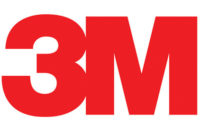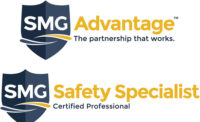Here are the responses:
“Every department should be charged for its PPE but Engineering should pay 65% of cost of PPE and Maintenance be charged 20% of PPE cost. E/OHS department could be charged between 3% - 5%.
This encourages Engineering to find means of eliminating the hazard or engineering a means of reducing exposure or substituting a less hazardous product or process that reduces hazard severity and/or worker exposure.
It also encourages Maintenance to have and follow detailed preventative maintenance program to eliminate hazards associated with equipment not being within specifications and SOP.
It also encourages each production department to train workers on proper equipment operation, associated hazards, how minimize exposure and where to get additional information about the hazard(s).
“This approach will help minimize the need for PPE and increase worker understanding and proper use of appropriate PPE. “
“I don’t believe completely charging PPE to the E/OHS department is a good practice. When things are getting eliminated to lower the budget, safety is all too easy a target in as much as it’s not always easy to recognize injuries/illnesses that aren’t happening and conclude the expense is wasted.”
“My feelings are mutual regarding have the department budget for their required PPE. On the other hand it must be understood not providing PPE where it is required should not be an acceptable way of doing business.“
“Another option is to have Safety purchase PPE then charge it back to the department. In this way the Safety Department keeps up on needs and new technology while each department pays their share. This also allows for quantity discounts, continuity of product lines, makes budgeting easier, and provides a single point of contact for vendors (keeps the email traffic and vendor visits to a minimum).”
“The Safety department should set the PPE policy (ANSI standards for shoes and safety glasses, for example) but should not have the burden of purchasing for the plant. I’d have to see a real cost savings to cover the cost of the resources required to administer a program to purchase all the PPE and charge back to each department. I’d rather see Safety out in the plant assisting with audits, training, investigations, instead of administrative work. My two cents.”
“What you and others are saying is 100% correct, that personal protective equipment budget shall be on operation & maintenance, and 3-5% can be on Safety, because actual users are the consumers of the PPE, are other than safety dept personnel. Secondly, safety dept is not a line management function, and they are not accountable for companies profit / loss account — essentially if safety dept. is an advisory functional dept. of the company.
But even above this, if your organization emphasizes to put the safety budget in your dept. then I will suggest this: in every management review meeting, you must show one slide on budget and expenses on PPE. This will give you an inside view of where the wastage is taking place, why people are asking for extra PPE, which will give you sense of any hidden hazards present in that dept., and you’ll know they are consuming more PPE instead of taking care for engineering controls.”
“The philosophy of using PPE is deep rooted in the minds of people and management, and use of PPE shall be mandatory & essential for certain types of PPE. For every safety professional’s study course, the first subject is accident prevention, which emphasizes that PPE is “last line of defense. In actual practice, use of PPE is mandatory in every organization, an enormous amount of money is paid on the same, and PPE is considered as the cause of preventive & proactive measure for accident prevention or reduction of injuries. This is a reactive way of thinking — knowing that we are having certain types of hazards and we consider them as trivial; we want to hide the hazards, ignore them or do not want to mention them in our risk assessment or do in our safety procedure. We consider these hazards will be taken care by regular use of mandatory safety PPE”
“Some of our customers have adopted hybrid models to share the cost with their employees. For example, they may provide the standard hi vis vest at no charge to the employee. If the employee would prefer a lightweight mesh hi vis tee, they may pay 1/2 of the cost for an unlimited number of tees. The “frugal” employee still has their PPE provided by the company, but those who would like to upgrade for comfort have a reasonable option that is still reviewed for efficacy by the safety dept. We see a lot of this with the hi vis jackets and winter wear too.”
“Most of the safety supplies come out of my office, some go thru H.R and about 10% thru production. I personally would like this to be done by a vending machine which would resolve a large portion of who uses what My budget covers provision of PPE to all Departments. It means I have control over what is supplied and know it is suitable for the task and a risk assessment has been carried out to ensure it is the most appropriate PPE for the task in question. “
“I do agree that each site/operation must budget for their own PPE. But I also believe that EHS at some point must have a definite say in what percentage of the budget is allotted to safety items. EHS must also have a say in what types of PPE are and are not acceptable for the site. That way control of expenditure is maintained in the operational level but with prudent and consistent EHS guidance. That way we prevent the ole “he was wearing his PPE when he got injured ... but his PPE was not appropriate for the operation.” Do not get me wrong. I am not advocating purchasing the latest and greatest PPE gadgets out there. I am advocating a realistic, wisely and prudently developed budget that covers the needs for operations according to their level of hazard.
“Each department should be responsible for the cost of PPE used in their department. The decision for the selection of the correct PPE however, should be done by both the supervisor of the department and the safety professional who can provide expertise and should advise if the PPE is the proper type. An example of this would be the selection of respirators, as not all are created alike. Do you want employees wearing nuisance masks when they really should be wearing full-face respirators with organic cartridges? On many occasions, the safety professional may recommend something other than PPE (think hierarchy of hazard control) instead of purchasing PPE.”
“I supply all the logo hard hats and visitor safety glasses and order site OSHA posters. I charge the cost of the hard hats and glasses to three overhead accounts, but charge the shipping of these and the full cost of the Posters to the job site. Our office manager at our Corporate Offices will take the orders for vests, because each site/customer has a different color or need for reflective vests, and she charges to the job site. All else in PPE is purchased locally and expensed to the site.”
“In an ideal world the safety budget would always have the funds they need to buy any and all PPE for ALL departments but it’s unrealistic (because funds would have to be unlimited and that will never happen). I’m sure I don’t have to tell the safety professionals that the safety budget is an easy target for quick savings when the economy gets bumpy when top management is looking to save money. But by cutting safety’s budget this then opens Pandora’s Box because once the safety funds are dried up, safety must now rely on having to convince other departments to spend their budget money on PPE that safety should be buying.”
“I faced this very issue when I was the safety manager for a large company. When I took over, every department had their own idea of what PPE they needed, or didn’t need. One department spent lots more on their PPE so they got nicer glasses and better work boots. We had 5 different suppliers of safety supplies and no one had a true idea of how much money was being spent on PPE.
“I took over all PPE throughout the company. I limited suppliers to just 2 safety supply companies and got huge volume discounts. I tracked it, I controlled it and I saved lots of money. As a side benefit, I had several employees thank me because they now got exactly what they needed to do their jobs, and they were grateful that everyone in the company got treated the same. This worked for me, see what works in your company culture.”
“For the most part it has been my experience that EHS staffs are very small even in large companies —buying equipment-takes up a large amount of time —l eave it to the experts where the deals are and saving for the company — stick with understanding the standards and regulations — and helping your company comply with the regulations and best practices.”
“One of the reasons for Operations to purchase their own PPE is to keep those managers engaged in working safely. They need to be thinking about these things all the time, not just when the safety person comes around and tells them what they are doing wrong (who really wants to hear that?). Certainly a lot depends upon the culture of the organization, but if you don’t have a culture that encourages operations folks to consider safety when making good decisions, you are continuing it with safety department enabling (and possibly making it worse). If you let them be involved in the decision making, they will feel more empowered when it comes time for enforcement or coaching. Safety should not be an island unto itself.”
“The Operations Managers should be involved with the selection of the PPE through their risk assessment process. Once they identify a risk, if they can’t eliminate it or reduce it to a negligible degree, then PPE is probably going to come into the equation. It’s at that point that they need to involve the ‘safety bod’ in order to make sure they get the right PPE. From my experience most Ops Managers aren’t aware of PPE standards, cut rating for example, or that a cut glove may not prevent penetration from a sharp. It’s the role of the safety professional to make sure that’s done correctly. Once it’s done, then who buys the stuff is irrelevant as it all comes from the profit on sales, although I think the cost has to be visible to the end users and their managers. Where I work I buy the PPE, in other companies I’m aware of the Purchasing Department buys it, they are the experts in negotiating the discounts loved by Finance after all.



